How To Draw Anime Blush Dark Skin
Index
- Introduction
- Color Palette
- Base Color
- Shading
- Blush
- Highlights
- Reflected Calorie-free Effect
- Different Skin Color Palettes
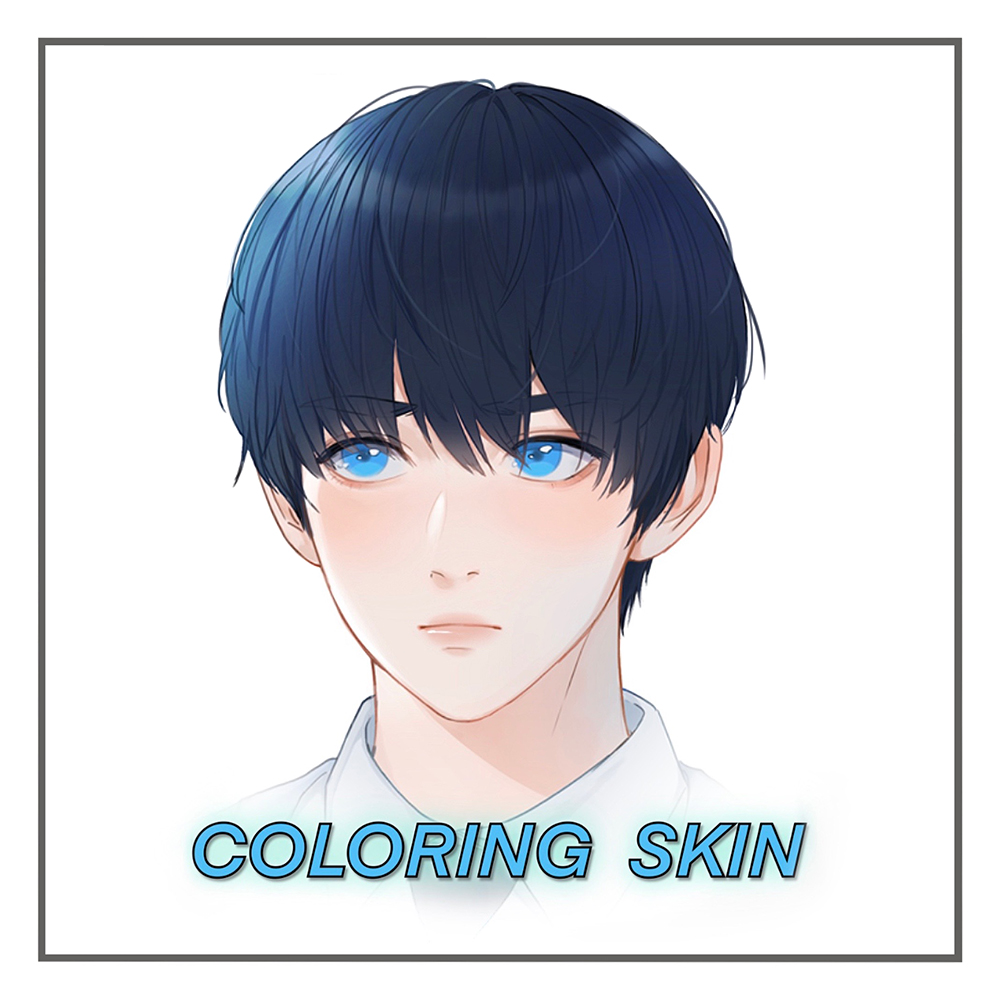
INTRODUCTION
Coloring pare is i of the most important parts in a drawing! It tin can be very hard sometimes, peculiarly if you tin can't choose the right colors and tools for it! That's why I decided to make a minor tutorial showing how I color skin using Clip Studio Paint. I hope you lot savor the tutorial and find it helpful!
Color PALETTE
Skin has mode too many tones. It can be very light, very dark, or somewhere in between! I usually use light-reddish colour tones for my drawings, so I decided to choose this palette for today's tutorial besides.
The following picture shows which colors are used for what part in the confront. I volition be explaining more about them afterwards!
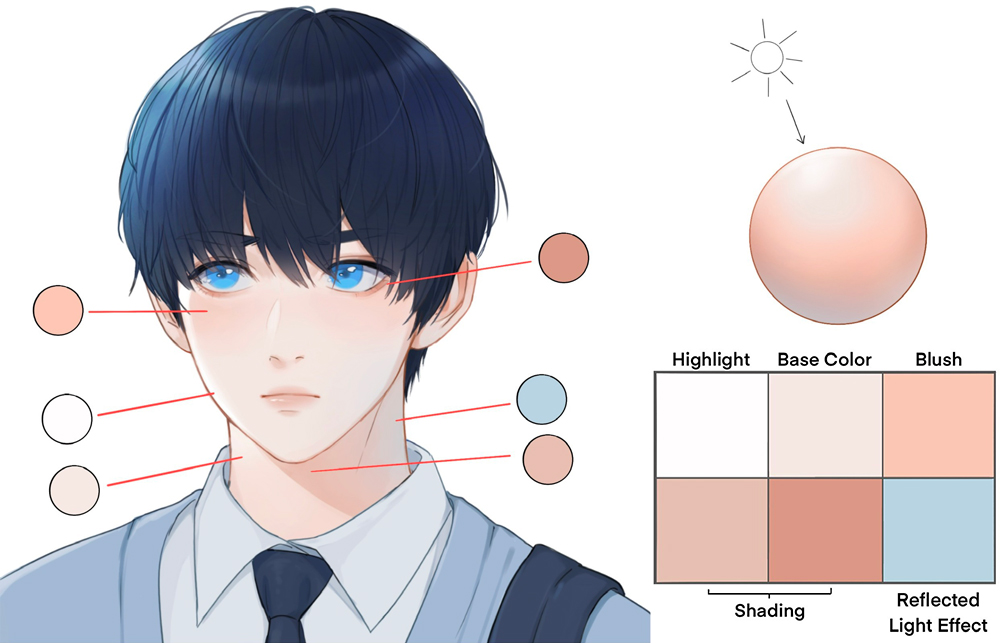
BASE COLOR:
Fill up the area y'all want to colour pare in with the base color first! Make sure you don't color exterior your lines.
The base of operations color should exist brighter than the last pare tone that yous want to have. This is because we volition add darker shading later!
Footstep 1:
Create a new binder (SKIN) and add a layer (Base) to it.
Brand certain to continue the Skin binder at the very bottom, because nosotros desire to color nether the lines and not over them.
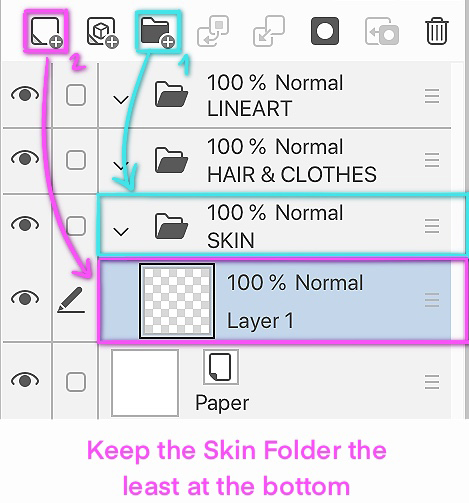
Quick Tip:
If you give your folders and layers names, it volition be easier and faster for you to observe your layers.
Step 2:
Choose your tool. For the base color, I utilise Turnip Pen on 100% Opacity. There are many other brushes that you lot tin utilize. These should exist difficult brushes and so yous tin color the area completely without leaving any transparent areas.
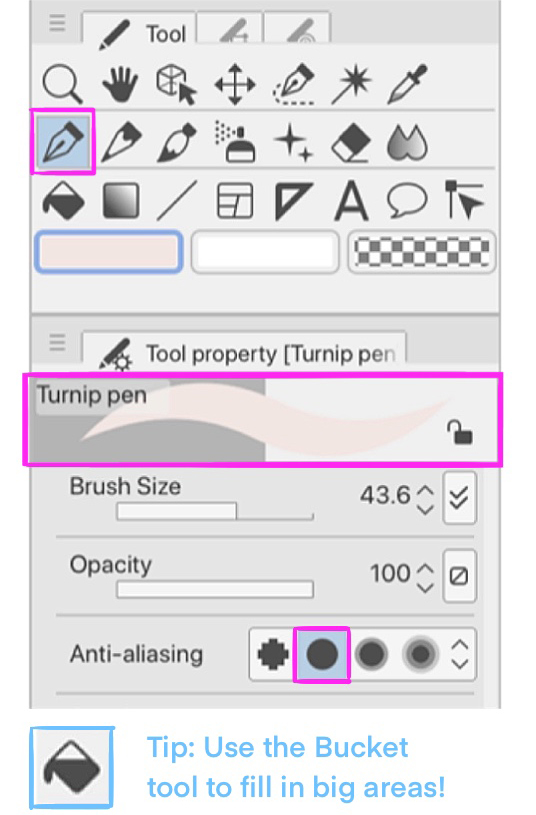
Step 3:
Selection the colour and fill the area.
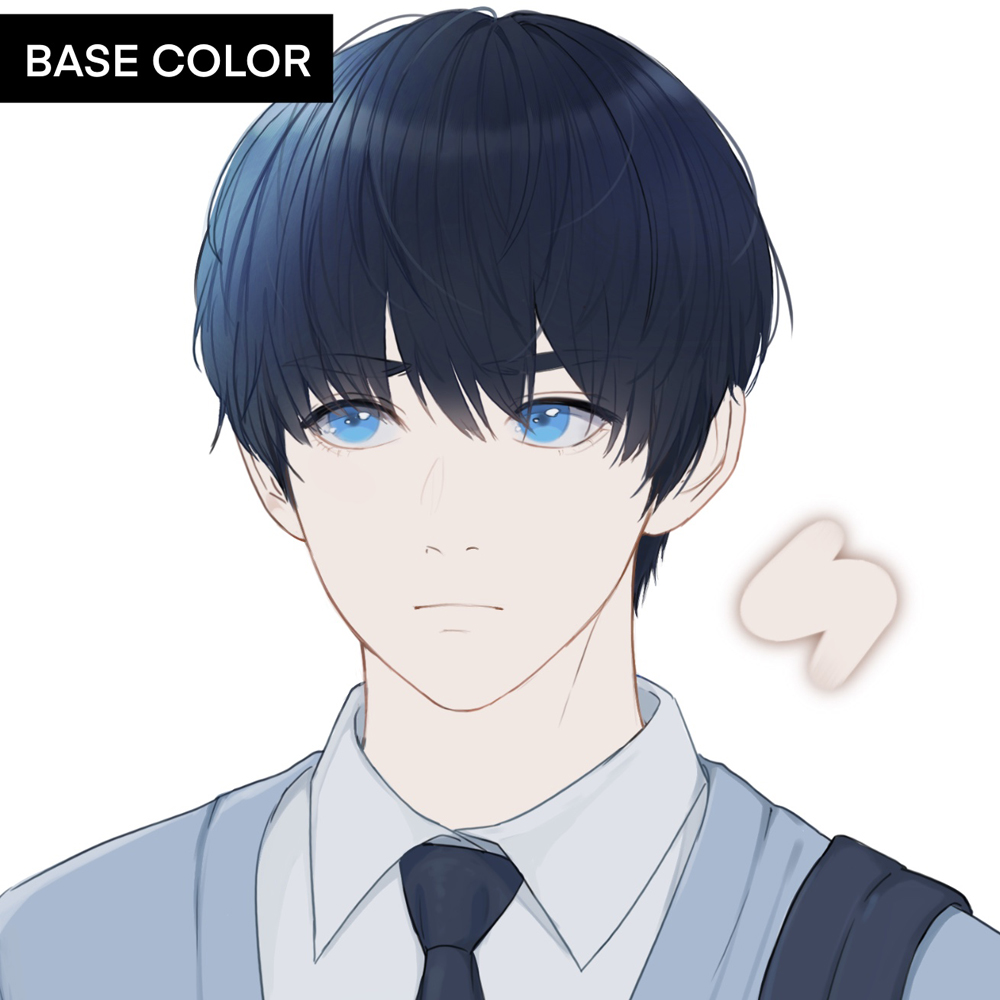
SHADING
To exist able to shade, y'all have to inquire yourself: where should the lite come from?
For this tutorial, I want the lighting to come from in a higher place on the left corner.
Step ane:
Create a new layer (SHADING) above the offset layer (BASE)
Click on the icon for Prune at layer below. This will confine the coloring inside the base color surface area only, which makes the coloring easier without worrying virtually information technology going out of the lines!
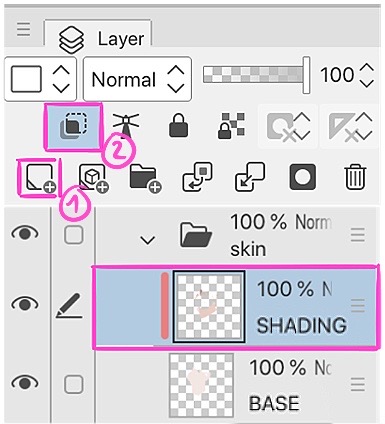
Step 2:
Choose your tool. For the shading role you tin can choose whatever brush you lot're comfortable using! I personally enjoy using the Watercolor brush the most.
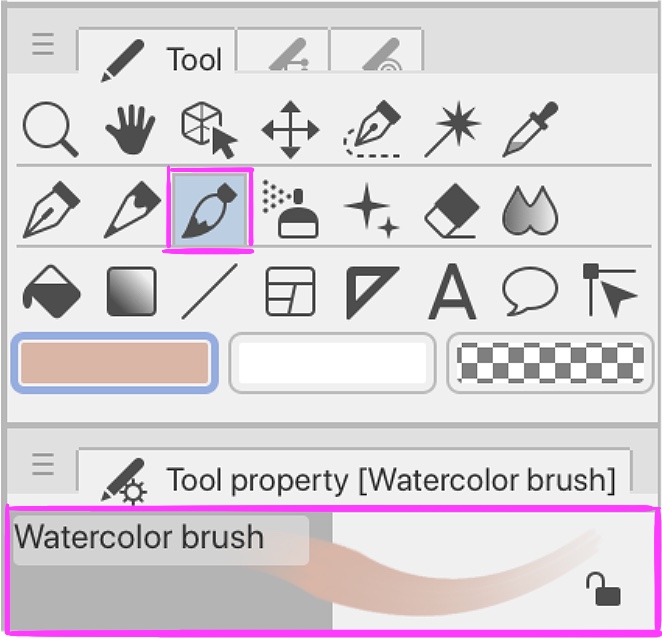
Step iii:
For shading, it's ever skillful to apply more than than one colour. It will make your cartoon more pleasing to look at and less ho-hum!
The colors you choose for shading should exist darker than the base color.
Usually, I use two tones and sometimes mix between them to create more tones.
Areas I add together shading to:
- On the eyes: First I use the vivid tone around the eyes and then add the darker tone on the peak and bottom eyelids
- Nether the nose
- On the lips: I like coloring the lips darker from the center and brighter toward the edges, this volition make the lips wait very soft
- On the olfactory organ: I apply the vivid tone exterior the ears and dark tone within
- On the neck: The low-cal is coming from the left, which ways the shading should be on the right side of the neck
- On the forehead under the hair: I volition explain this office in the adjacent pic.
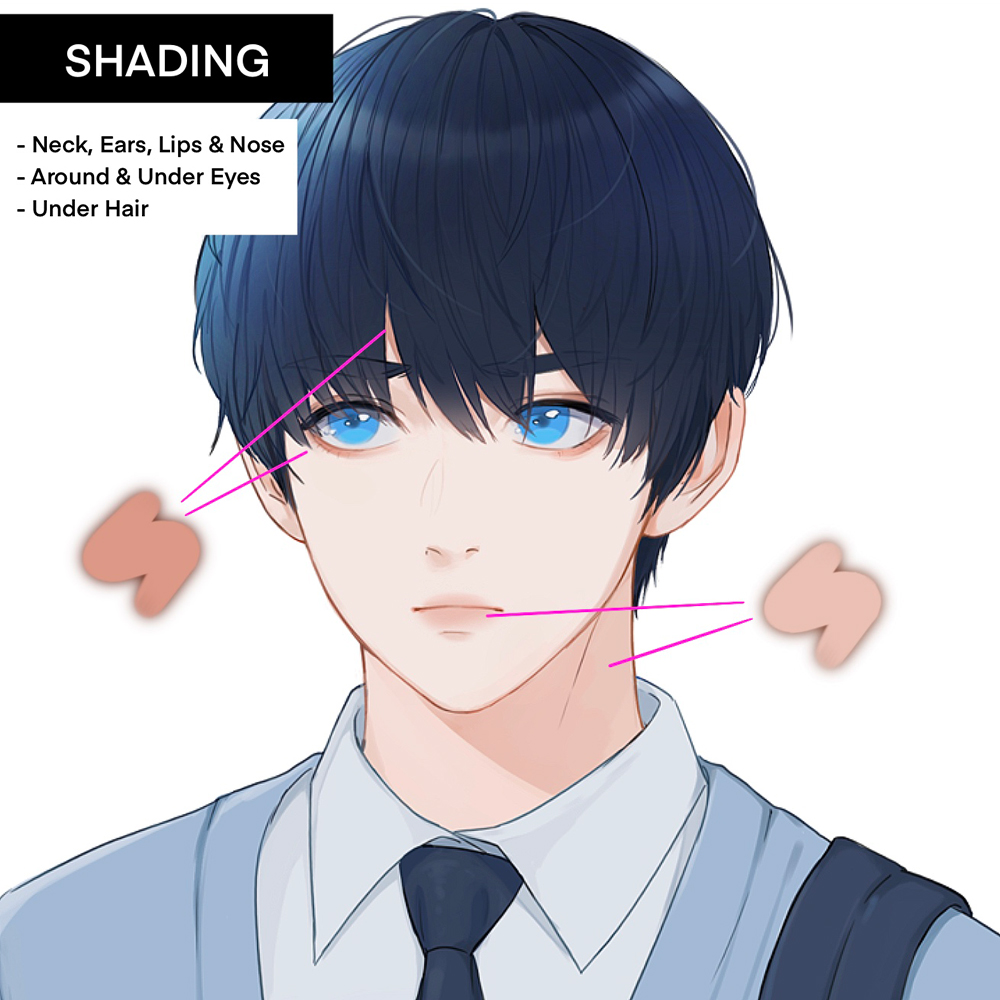
- Using Turnip pen in a dark tone, I describe the shadow nether the pilus
- Lock the layer
- Using Soft Airbrush in a low-cal tone, I color the bottom part of the shadow to brand it await more than realistic
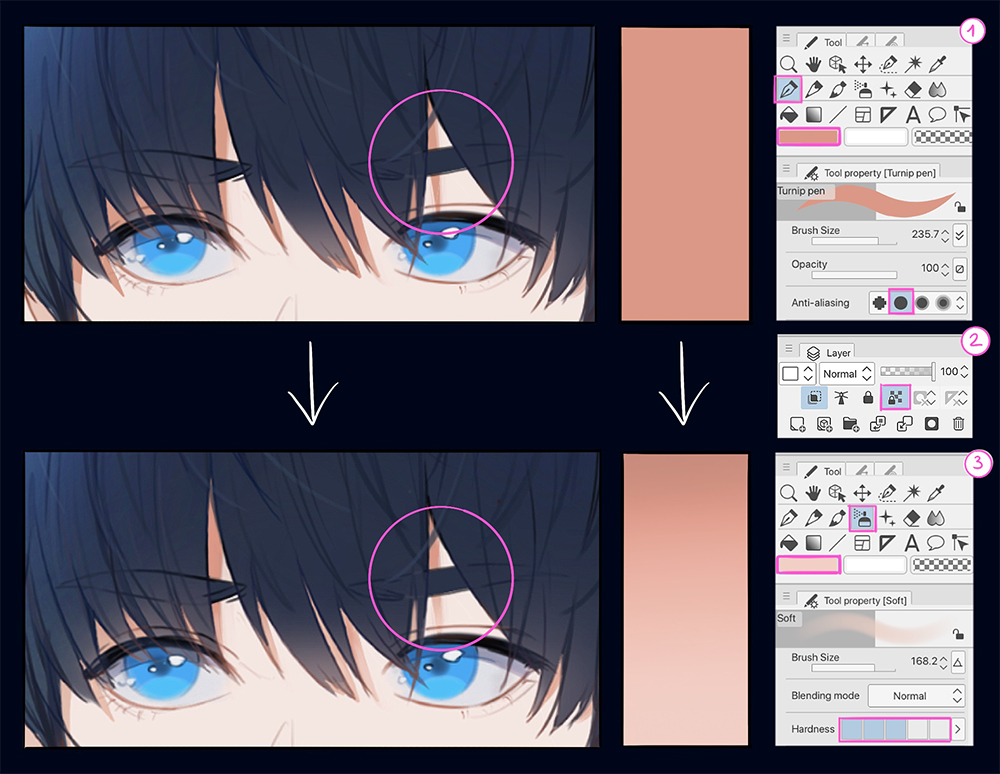
Blush:
Blush makes your drawings await softer and cuter. You can add it on whatever function of the body depending on your mode!
Examples:
- Cheeks (most common)
- Nose
- Elbows
- Knees
- Fingers
- Shoulders
Step ane:
Create a new layer (Blush) over the previous layer (SHADING)
Click on the icon for Prune at layer below.
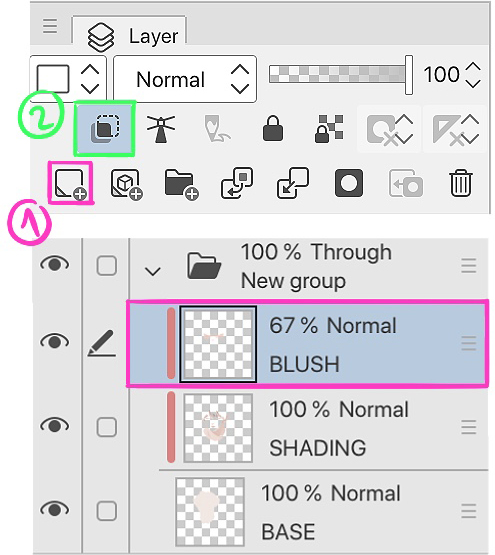
Stride 2:
Pick the color. For blush, I similar using light reddish tones.
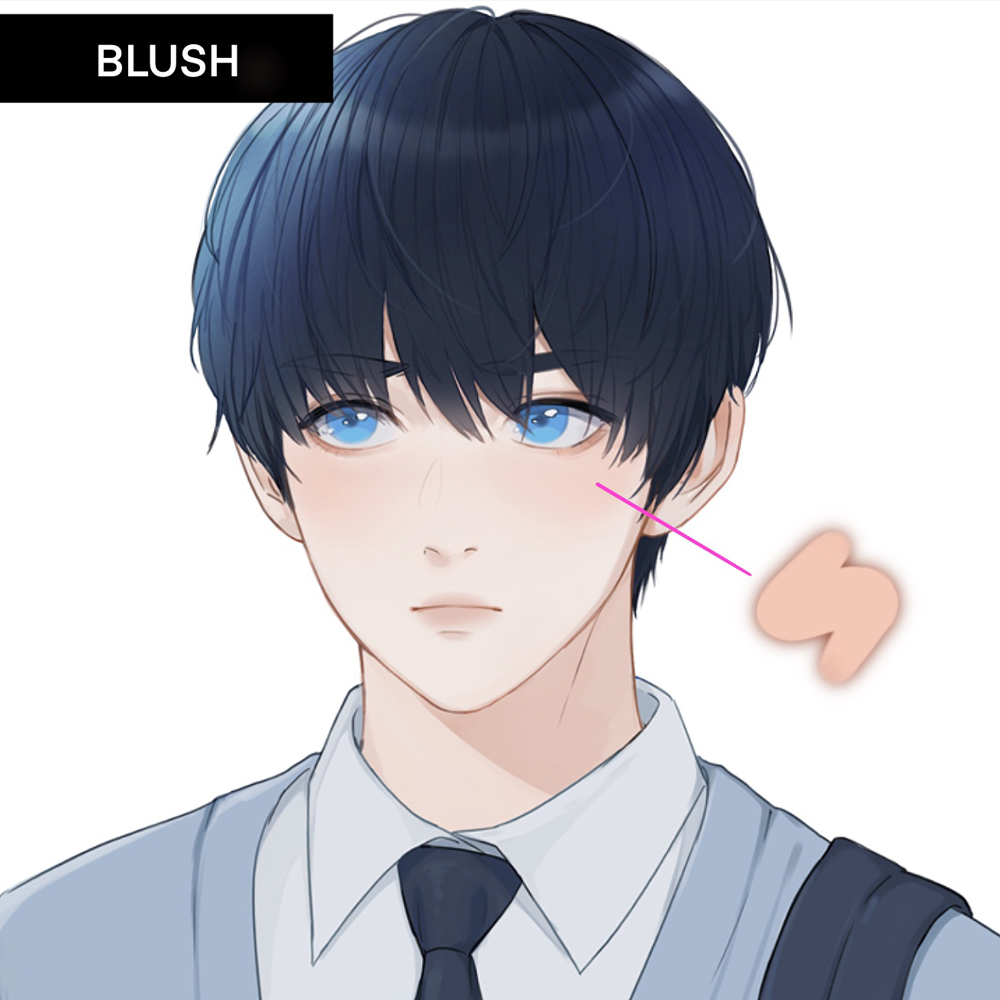
Step 3:
Choose your tool. I'll use the same Watercolor Castor every bit for shading!
Add some chroma on the cheeks and whatsoever other parts you lot similar
Using the Blend tool, try to smudge information technology from the edges only to make it look soft. (Advice: the bigger the brush is, the faster and cleaner it blends.)
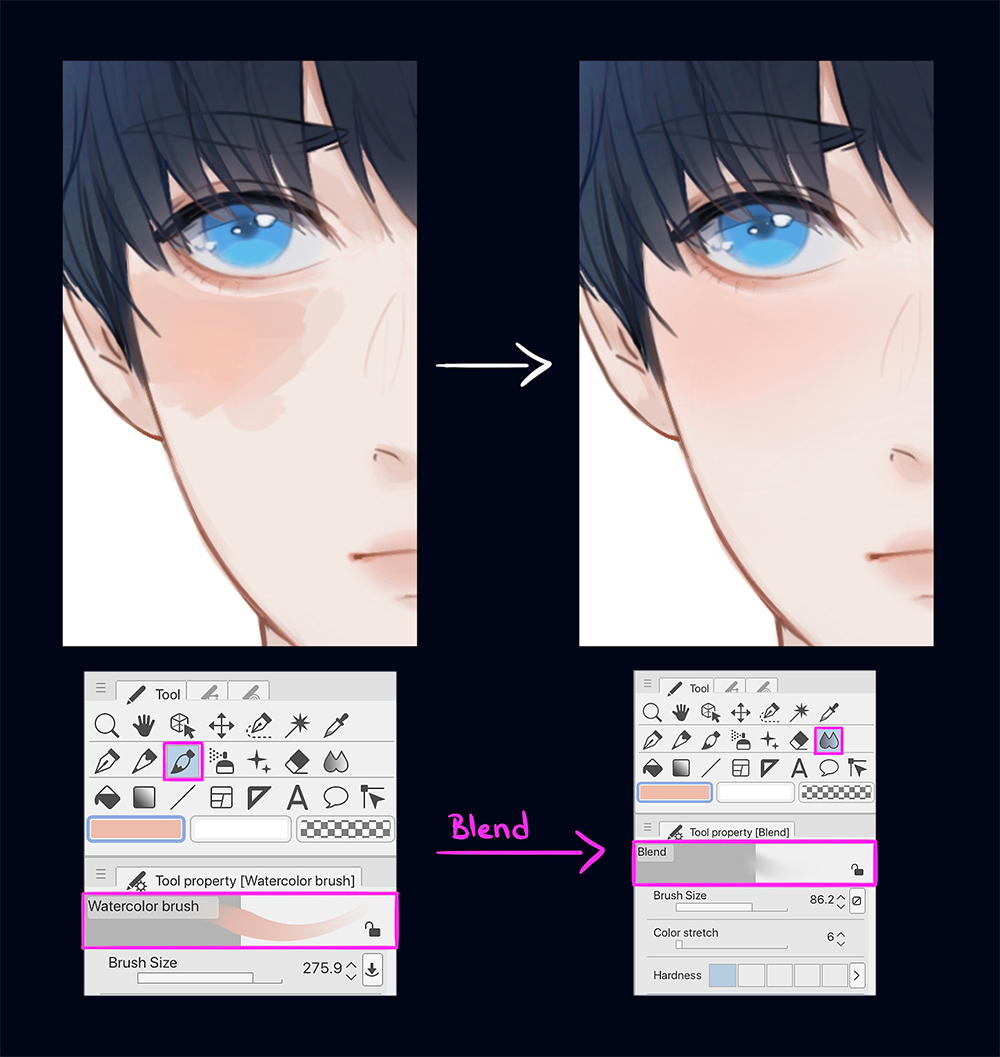
HIGHLIGHTS:
If your cartoon has shadows, that means there is a light too! That'due south why we add highlights, which gives the skin a soft glow!
Step ane:
Create a new layer (HIGHLIGHT) above the previous layer (Chroma)
Click on the icon for Clip at layer beneath.
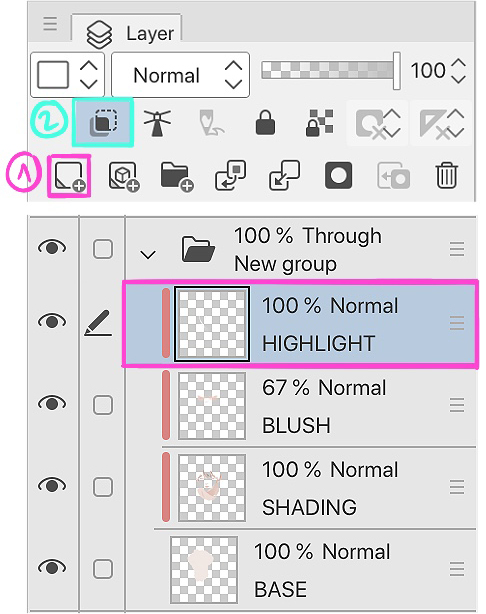
Step ii:
Pick the color. For highlights, I personally just apply a whitish color for this type of pare tone! For darker skin, white will look very bright, so I would go with light pink or chocolate-brown tones instead.
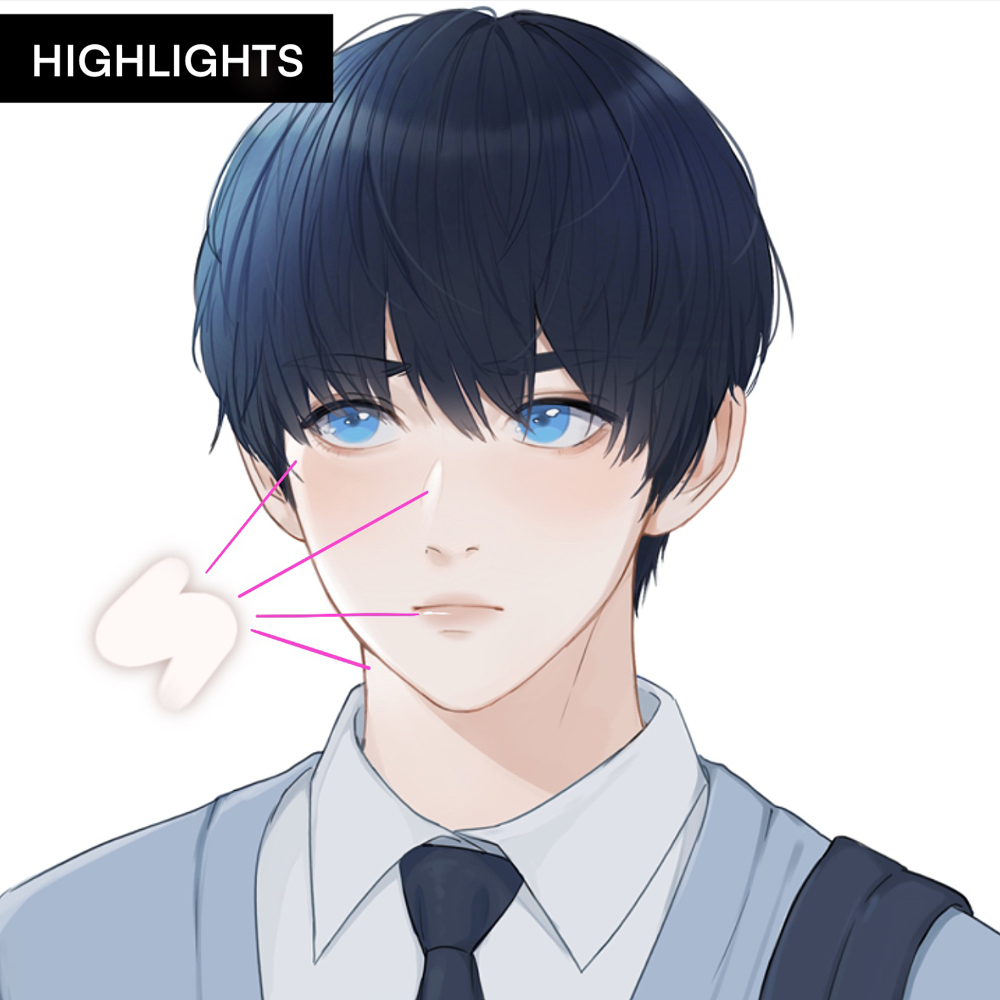
Step 3:
Choose your tool. I'll apply the same brush again which is Watercolor Brush.
You're gratuitous to employ whatsoever brush y'all're comfy with. It always depends on your style. If you want the drawing to await smooth, utilise soft brushes. If you want information technology to look sharp, utilize hard brushes.
Add the highlights on the parts where the low-cal comes from. For this drawing, the light is coming from the left.
I put highlights on the nose, cheeks, lips, and cervix.
You can also use the Blend tool to alloy some parts if needed.
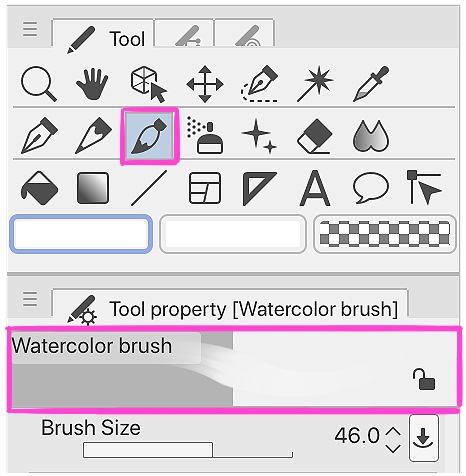
REFLECTED Calorie-free EFFECT:
To make your cartoon more than realistic, it's e'er nice to put reflected lighting on information technology. This appears in the darkest shadows, acquired by refracted light from nearby surfaces. The color depends on the environment, such as clothing, objects, and fifty-fifty the sky.
Step ane:
Create a new layer (REFLECTED Lite EFFECT) over the previous layer (HIGHLIGHT)
Click on the icon for Prune at layer beneath.
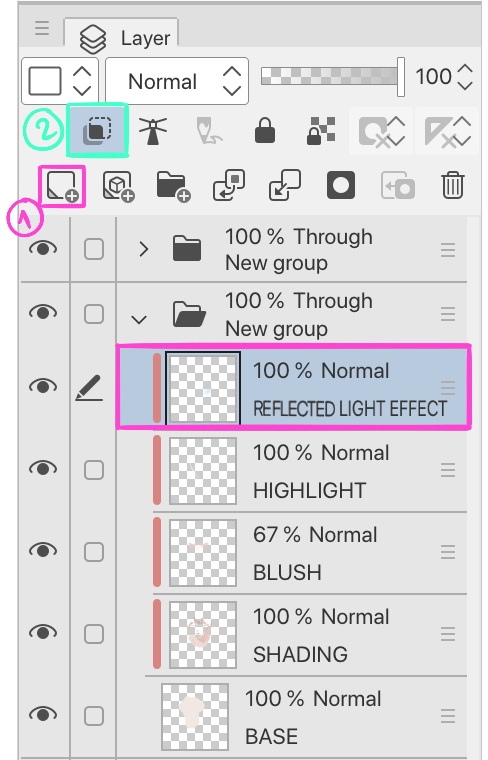
Step 2:
Pick the color. For the reflected calorie-free effect, I choose the color depending on the drawing. This cartoon is common cold and has lots of blue in it, so I idea the blue light effect will suit it the best.
You can e'er use whatsoever colour or even multiple ones! Just always make sure that the tone you chose fits well to the peel tone!The light effect should always exist a bit lighter than the surface area you're going to add on.
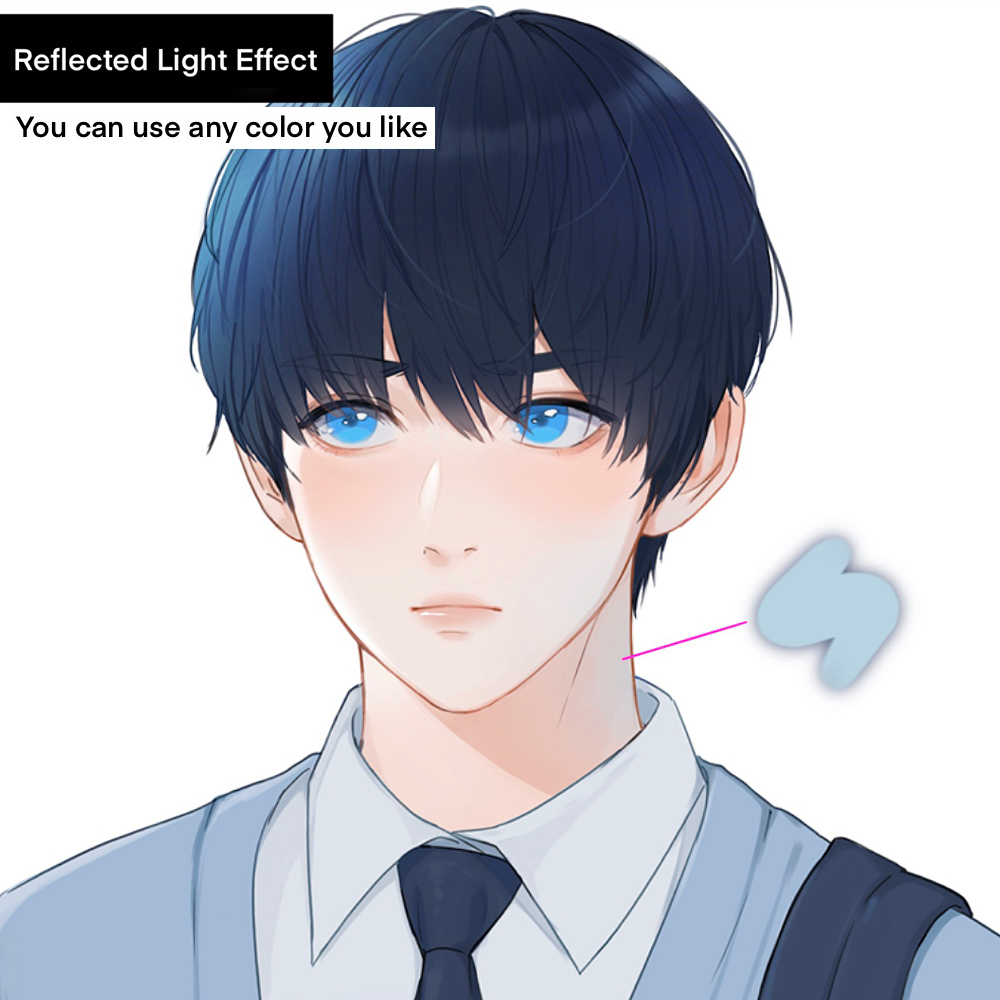
Step 3:
Choose your tool! For this step I'll go with Soft Airbrush. I think information technology does the job perfectly. Just again, you're always complimentary to try any brushes y'all want.
You can put this light effect on any function you like! I personally think information technology looks the best in the dark shading parts, which is the neck.
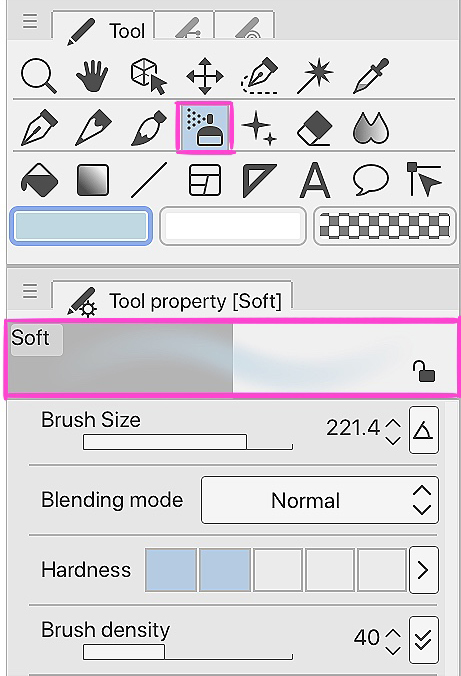
Dissimilar Skin Color Palettes:
Here are 4 unlike skin palettes for you! There are way too many skin tones, then this is just a few examples. Yous tin always create your own palettes and colors.
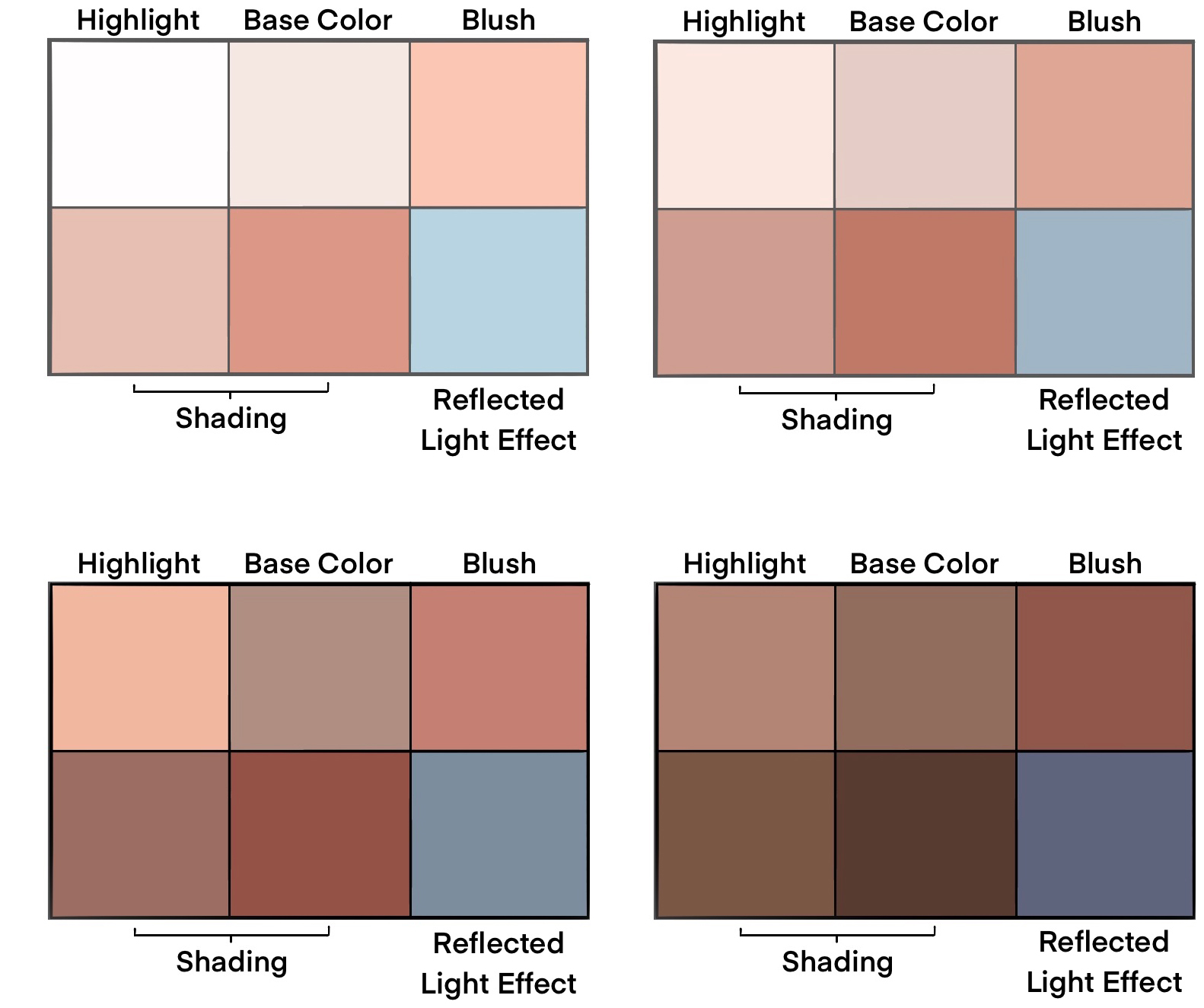
This is the end of my skin coloring tutorial! I tried to make information technology as simple equally possible and easy for you to empathize. I hope you learned new techniques and things today!
There is e'er more than to learn and detect! Clip Studio Paint is definitely astonishing and easy to use once yous learn more than about it.
Remember to practice a lot and take fun!
Source: https://www.clipstudio.net/how-to-draw/archives/161037
Posted by: brownkelp1992.blogspot.com

0 Response to "How To Draw Anime Blush Dark Skin"
Post a Comment